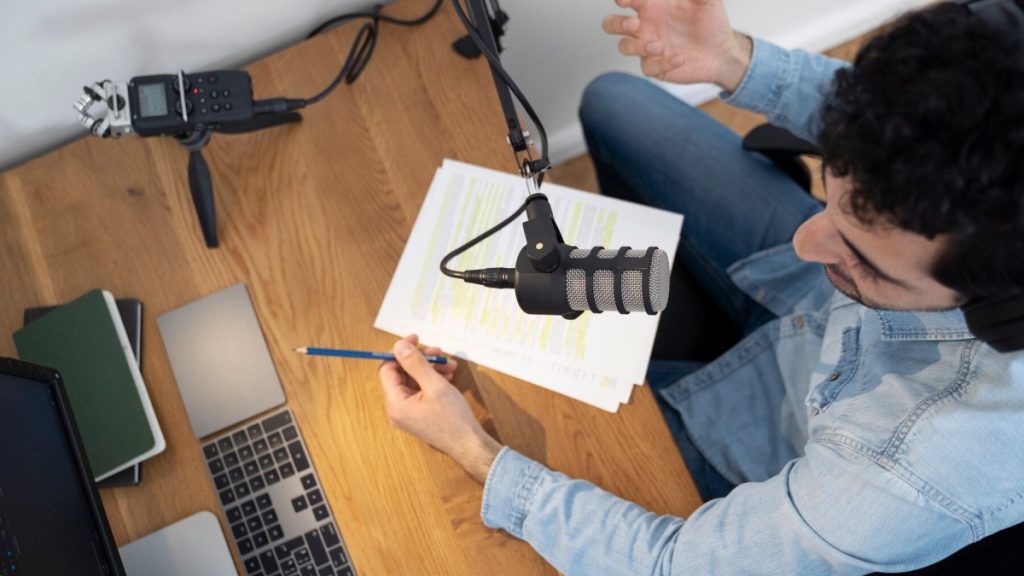Voice-over is a technique where a voice that is not part of the narrative is used in production. The voice-over can be used to provide information about the characters or setting, advance the plot, or provide comic relief.
The use of voice-overs has become increasingly popular in recent years, with many music videos and films making use of the technique.
In fact, there is a whole gamut of voice generation online products like online TTS and AI voice generators which can be used in production if video editors want to spend less time in the voice-over creation process.
We are sharing some tips and tricks for all the video editors out there who want to make use of voice-overs in your productions!
How Voice-Over is Used in the Music Industry
One common way voice-overs are used in the music industry is for album commentary. This involves using a voice-over artist to talk about the meaning behind certain songs or albums. This can be a great way to engage listeners and give them a deeper understanding of your work.
How Voice-Over is Used in the Film Industry
A voice-over is also commonly used in the film industry. One way it is used is for character introductions. This can be a great way to set up the world of your film and introduce the audience to your characters.
Another common use for voice-overs in films is during montages. This is where a character will narrate over a series of scenes, often with music playing in the background. Voice-overs can be used to great effect here, so make sure you experiment with them in your films!
Benefits of Voice-Overs for Video Editors
A voice-over can be a powerful tool to engage listeners and create an immersive experience. Here are five benefits of using voice-overs in your productions:
1. It can help engage listeners: Voice-overs can be used to grab attention and hold listeners’ interest. By adding a voice-over to your production, you can ensure that your audience remains engaged throughout.
2. It can be used to add humor or levity: A well-placed voice-over can add a touch of humor or levity to your production. This can be particularly effective in breaking up long periods of exposition or dialogue.
3. It can help create an immersive experience: Voice-overs can help transport listeners into the world of your production. By carefully crafting the voice-over, you can create an immersive experience that will stay with your audience long after they finish listening.
4. It can be used to add emotion or atmosphere: Voice-overs can be a great way to evoke emotions within your audience or set the mood for a particular scene. By choosing the right voice and delivery, you can really bring your production to life.
5. It clarifies or explains information within a production:In some cases, a voice-over may be necessary to clarify plot points or explain complex concepts within your production. Used sparingly, it can help ensure that your audience understands what is going on and doesn’t get lost along the way. Leveraging AI visual testing tools can help identify areas where a voice-over might be beneficial, such as scenes with low visual clarity or where subtle nuances in character expressions might be missed.
6 Tips and Tricks for Using Voice Over Successfully in Any Video Project
If you want to use voice-overs successfully in your productions, here are some important tips you need to follow:
Buy the Right Gear
If you’re recording voice-overs, you need to ensure you have the right gear. Investing in a good quality microphone and audio interface will go a long way towards ensuring that your recordings sound professional and polished.
Find the Right Environment
Another important tip is to find an environment that suits your needs. For example, if you’re recording dialogue, you’ll want to find a place with minimal background noise so that your recordings are clear and intelligible.
Likewise, if you’re recording narration, you’ll want to find a place with good acoustics so that your voice sounds natural and full-bodied.
Know Your Script
Before you start recording any voice-overs, it’s essential that you know your script inside out. This will help ensure that you deliver each line with conviction and feeling.
Make sure you rehearse beforehand so that you feel confident and comfortable when it is time to turn on the microphone.
Warm Up Your Voice
Just like athletes need to warm up their muscles before competing, vocalists need to warm up their voices before recording. There are plenty of vocal exercises you can do in order to loosen up your vocal cords and prepare them for recording.
Try doing some simple tongue twisters or singing scales before starting your session.
Take Breaks
Recording voice-overs can be taxing on your vocal cords, so take breaks regularly to give them a chance to recover.
It’s also good to have a drink of water between takes as this will help to keep you thirsty and hydrated. Avoid caffeinated beverages, as these can worsen the situation by causing dehydration.
Don’t Overdo It
Finally, don’t try to rush through the process of recording a voice-over just to get it done quickly. Not only will this lead to voice-overs that sound forced and unnatural, but it could also cause temporary damage to your sensitive vocal cords if overdone.
Take your time recording each take, and make sure everything sounds just right before moving on to another one.
Conclusion
A voice-over is a great tool that can be used to enhance any production. By following the tips and tricks in this article, you’ll be well on your way to using voice-overs like a pro!
